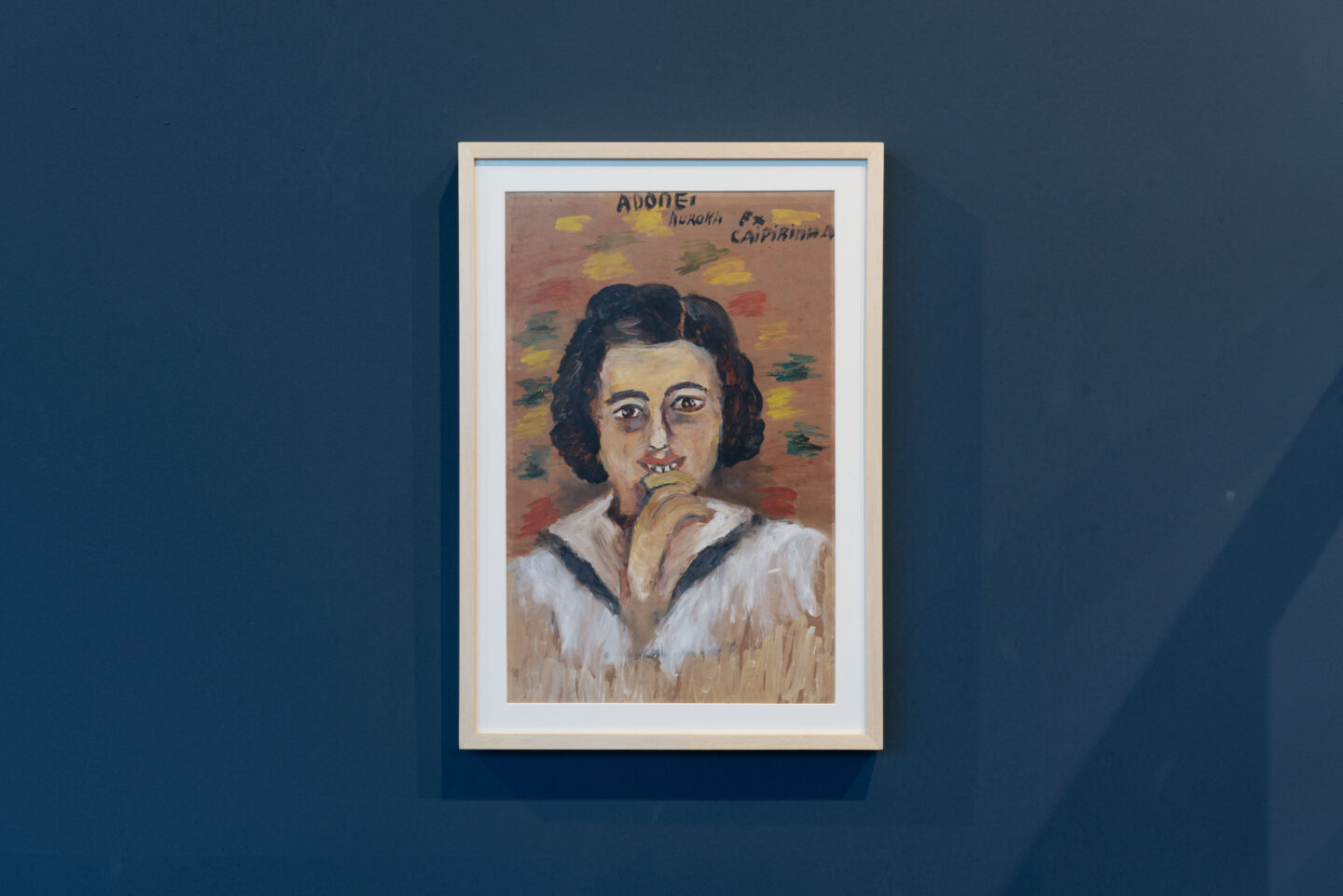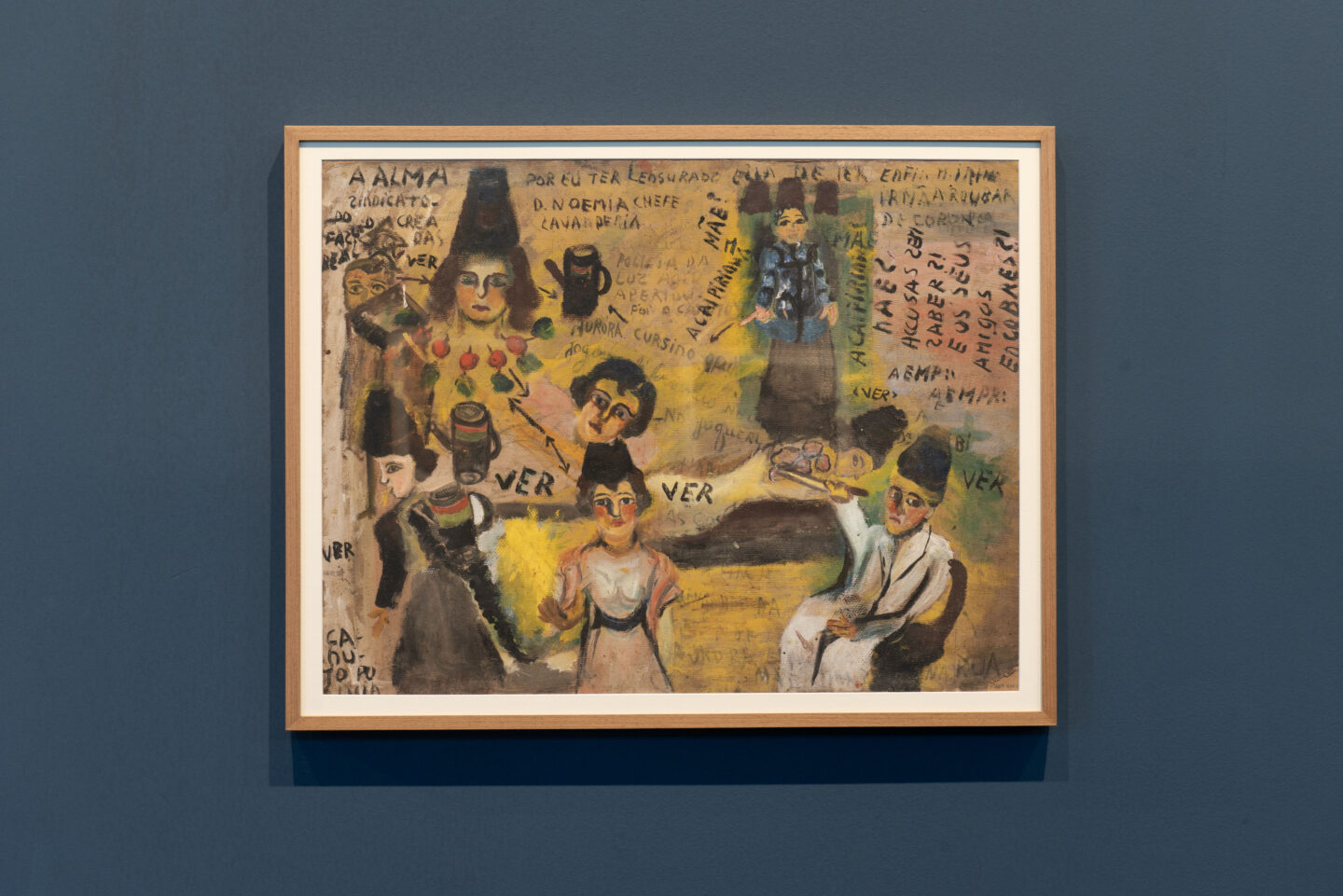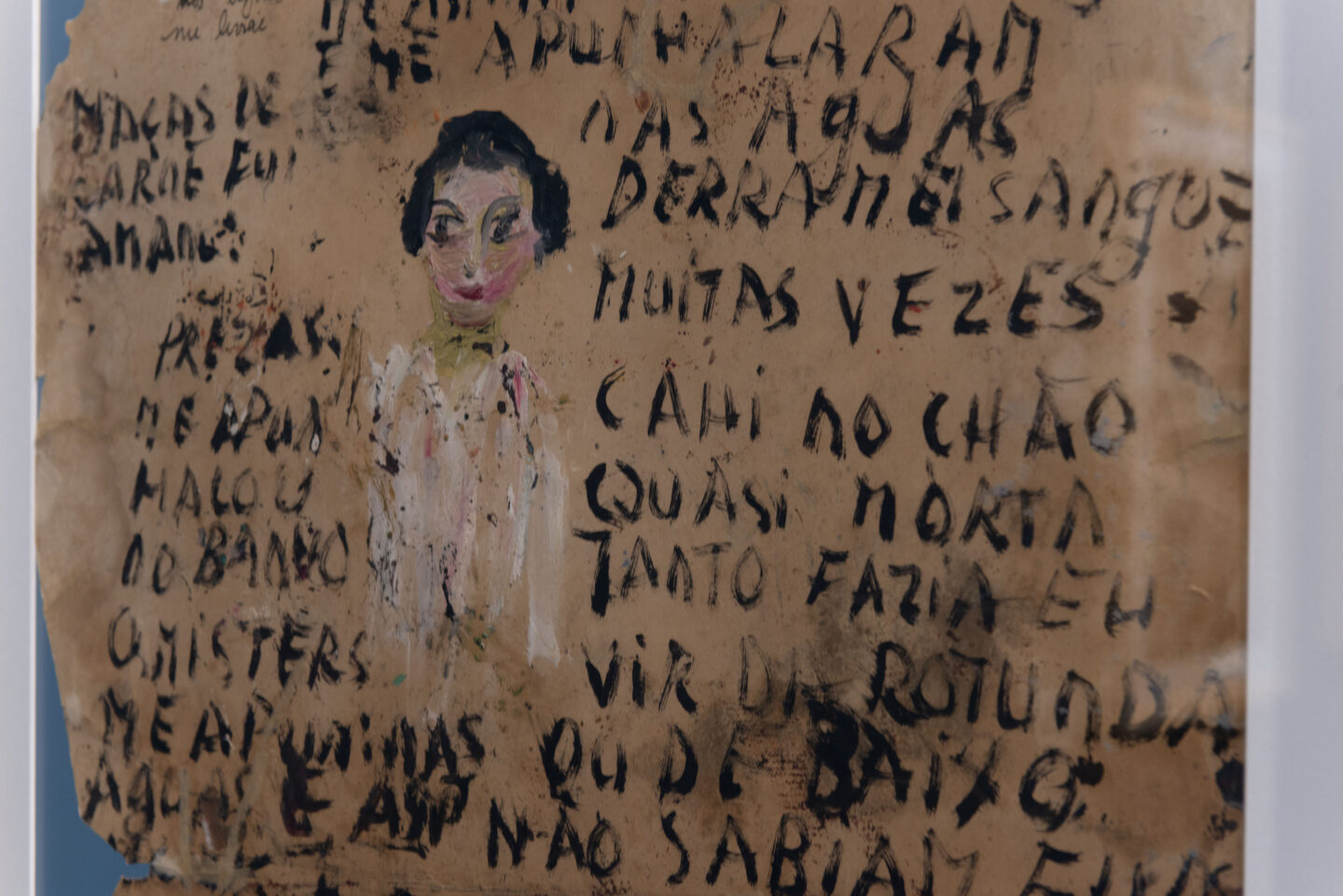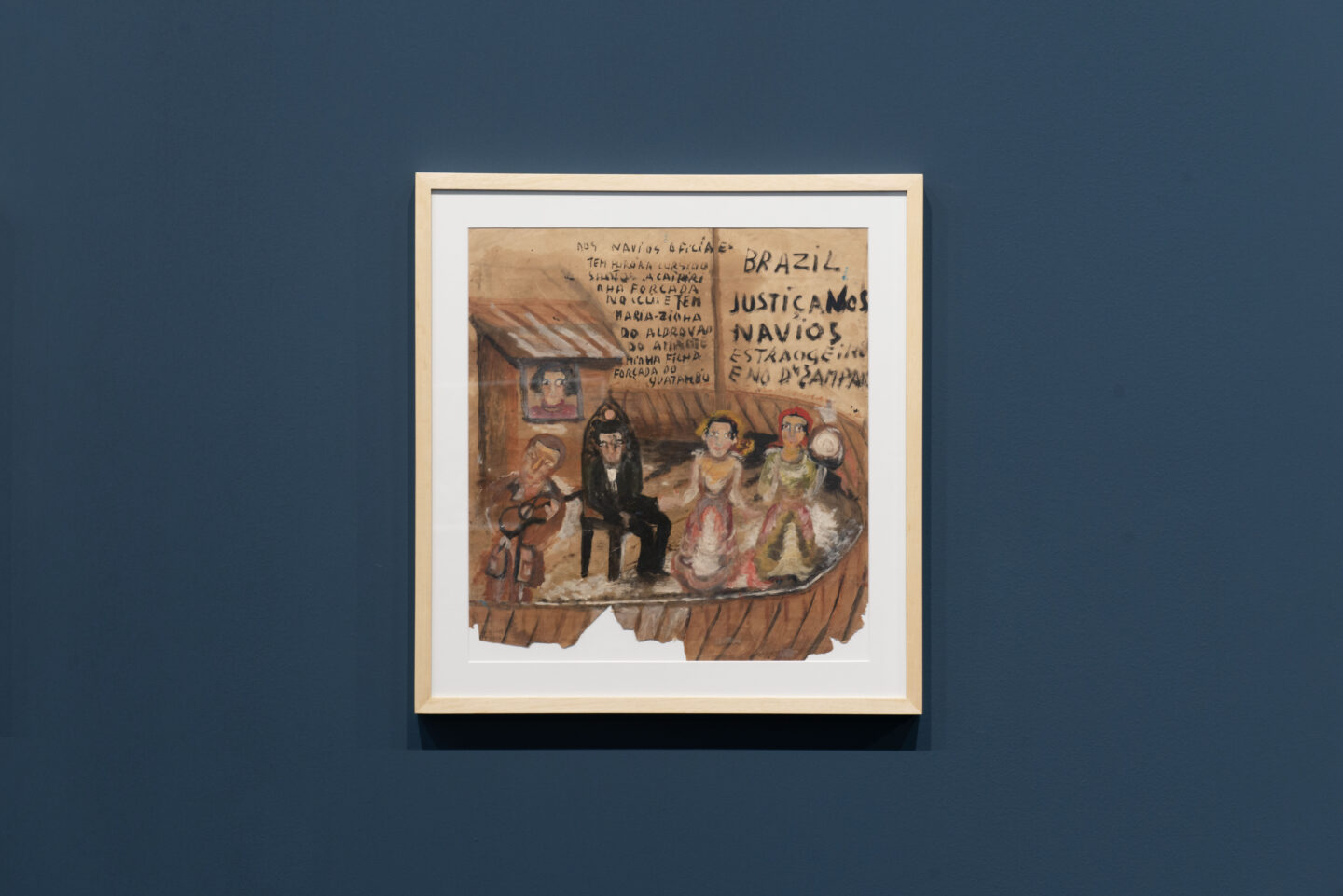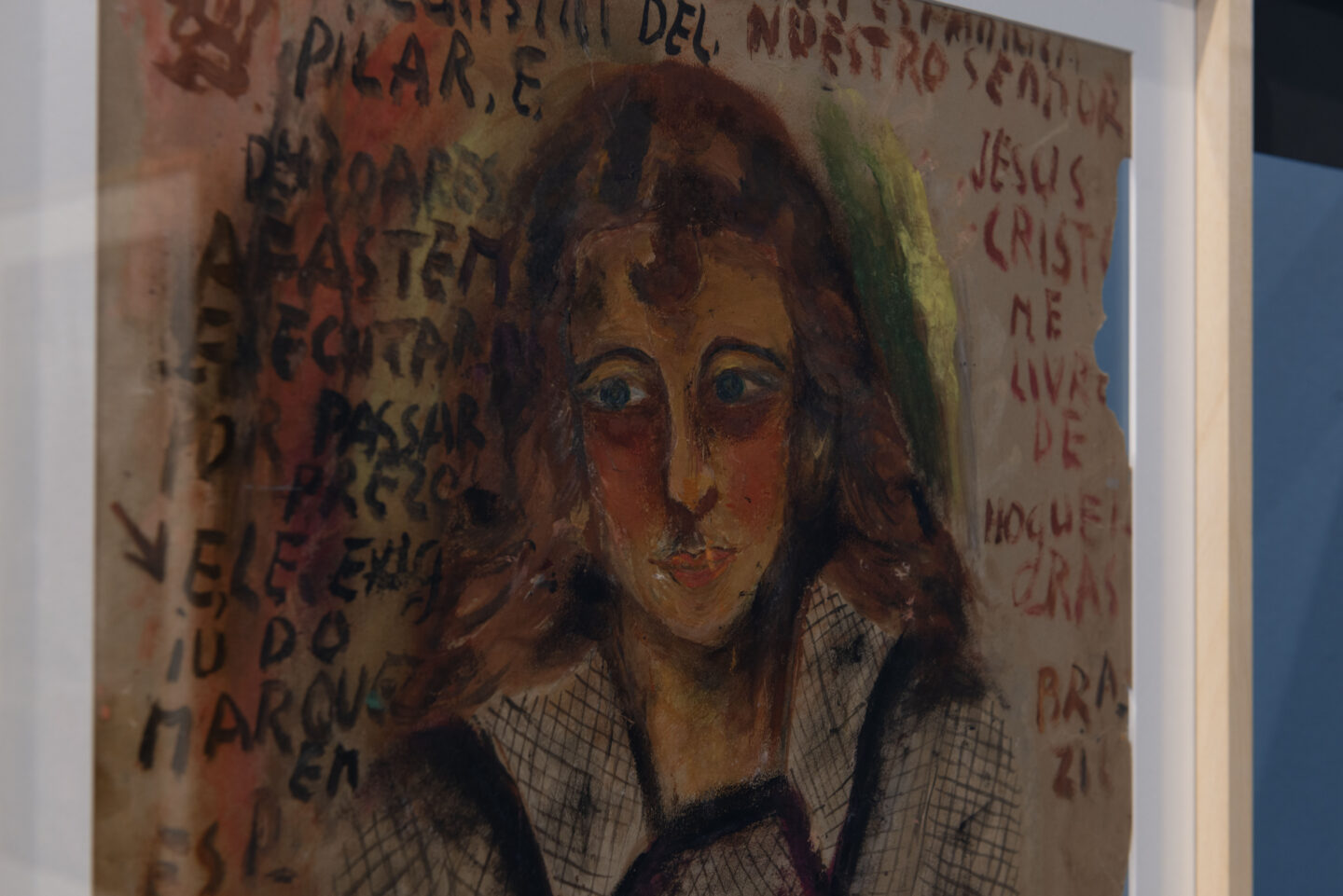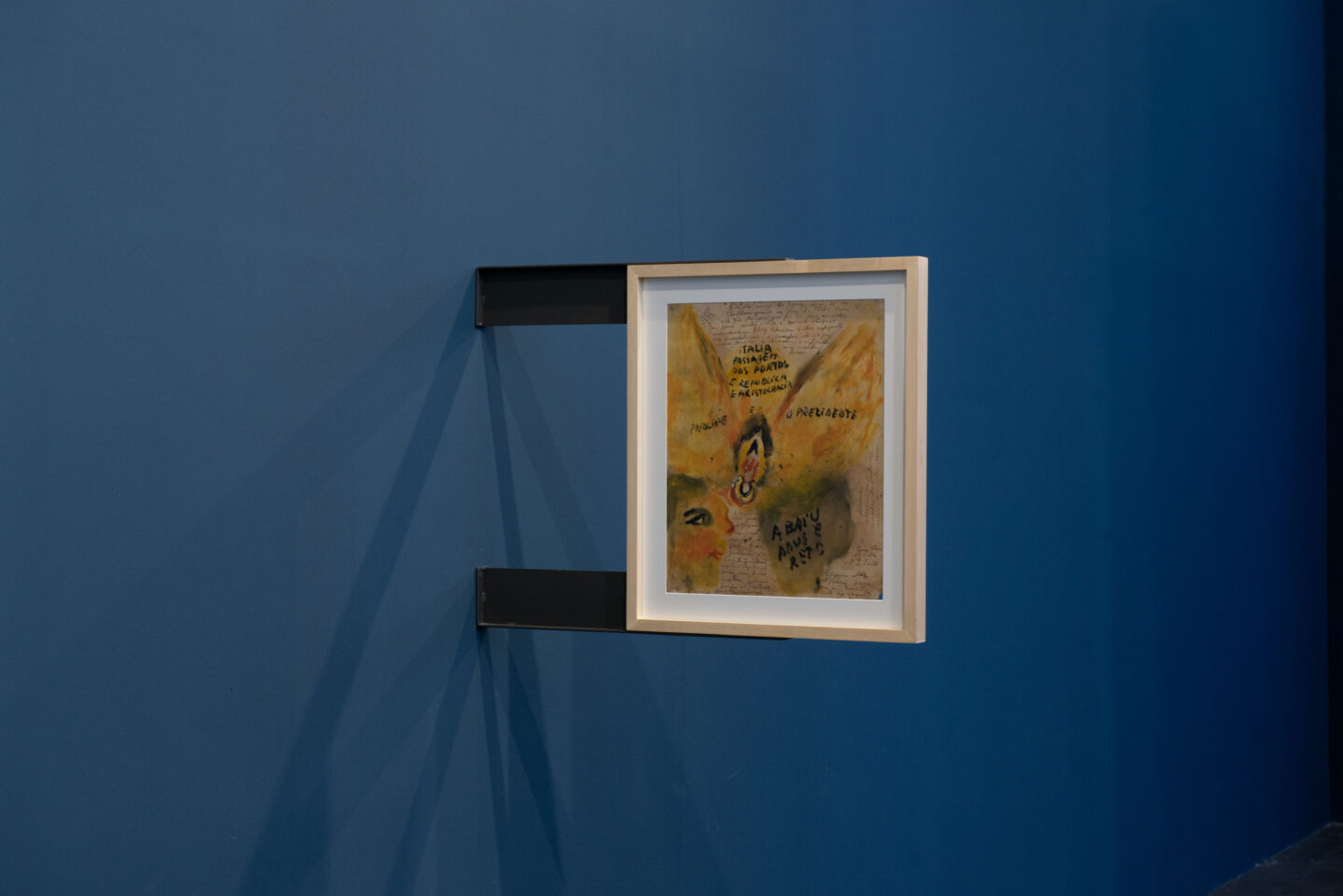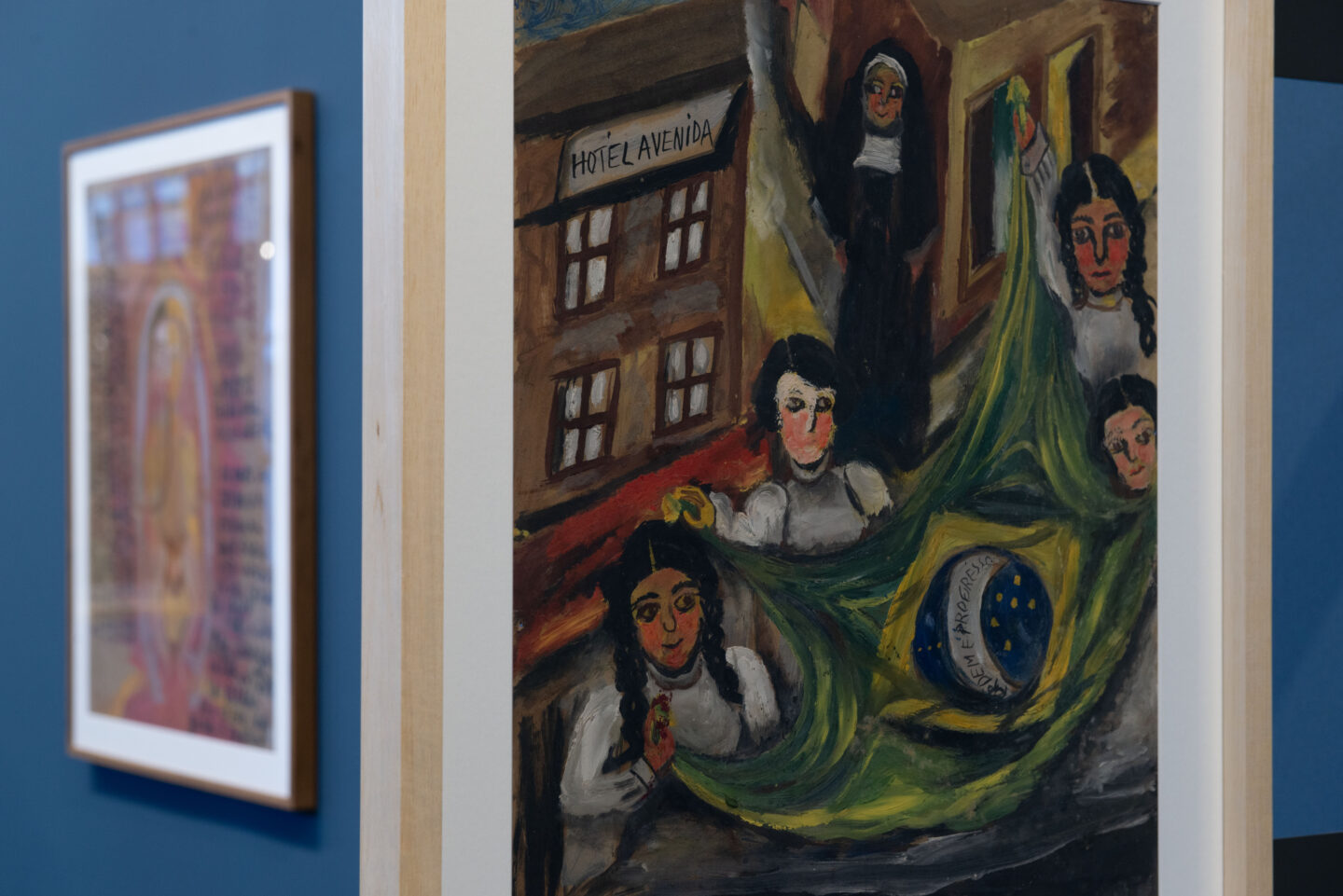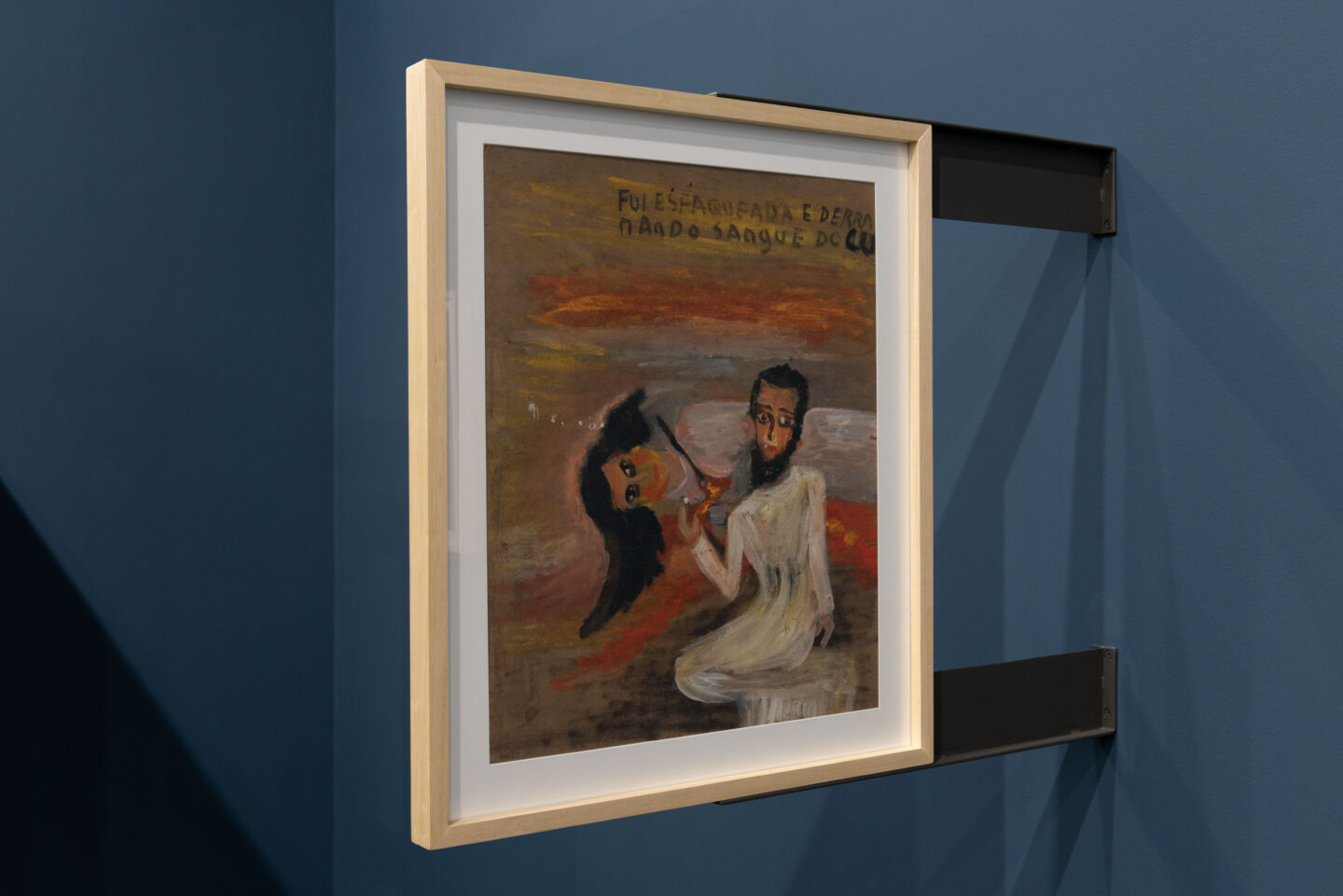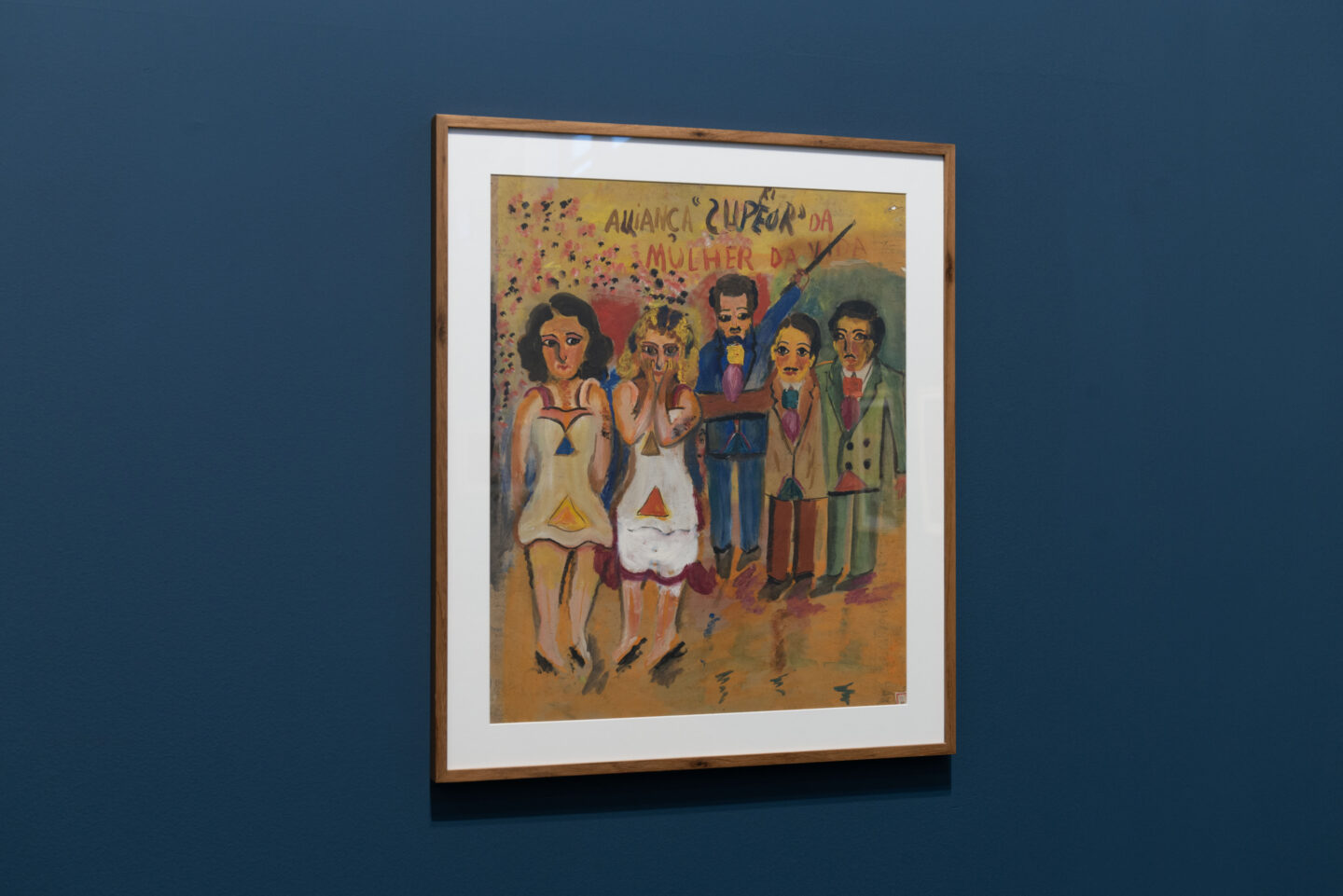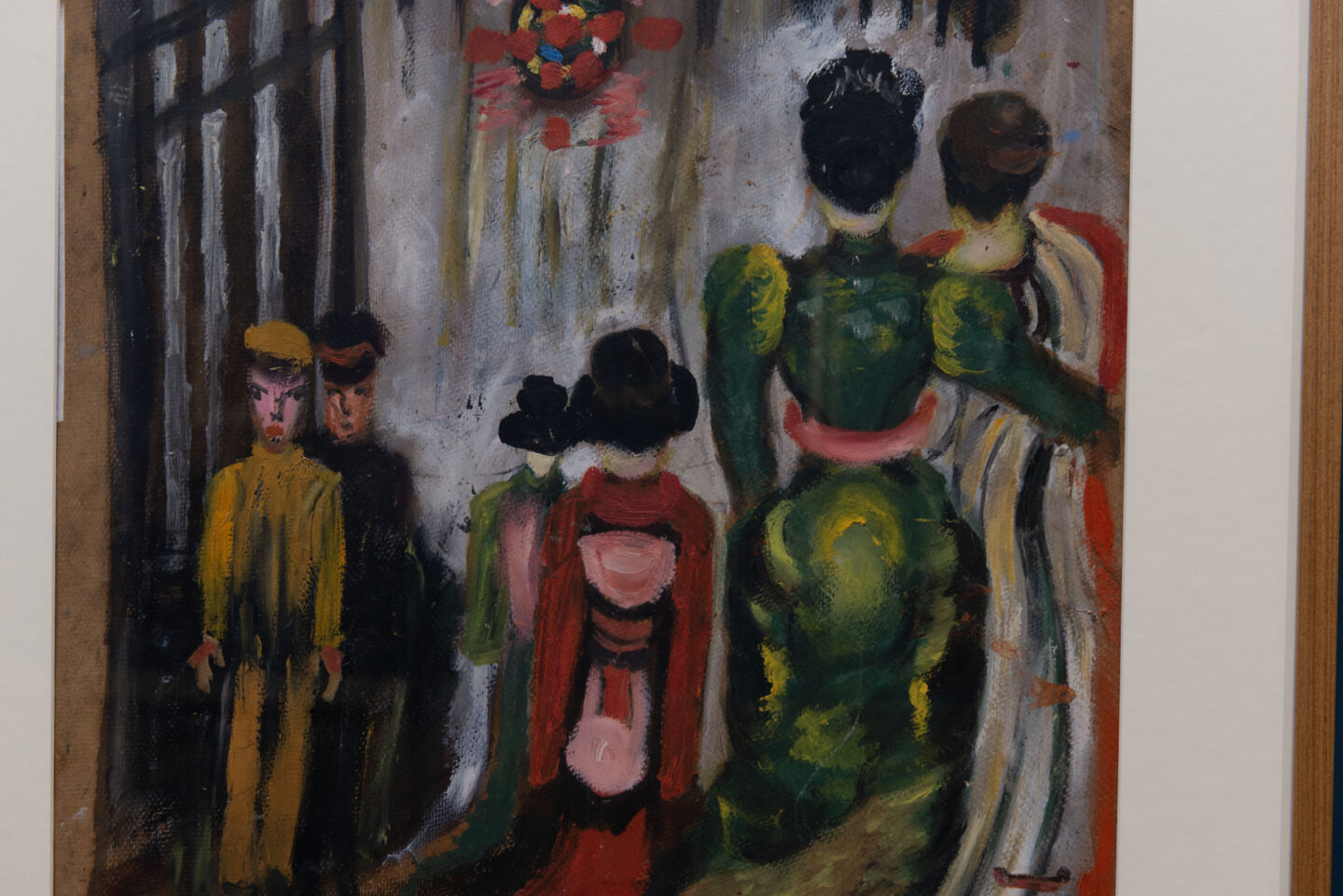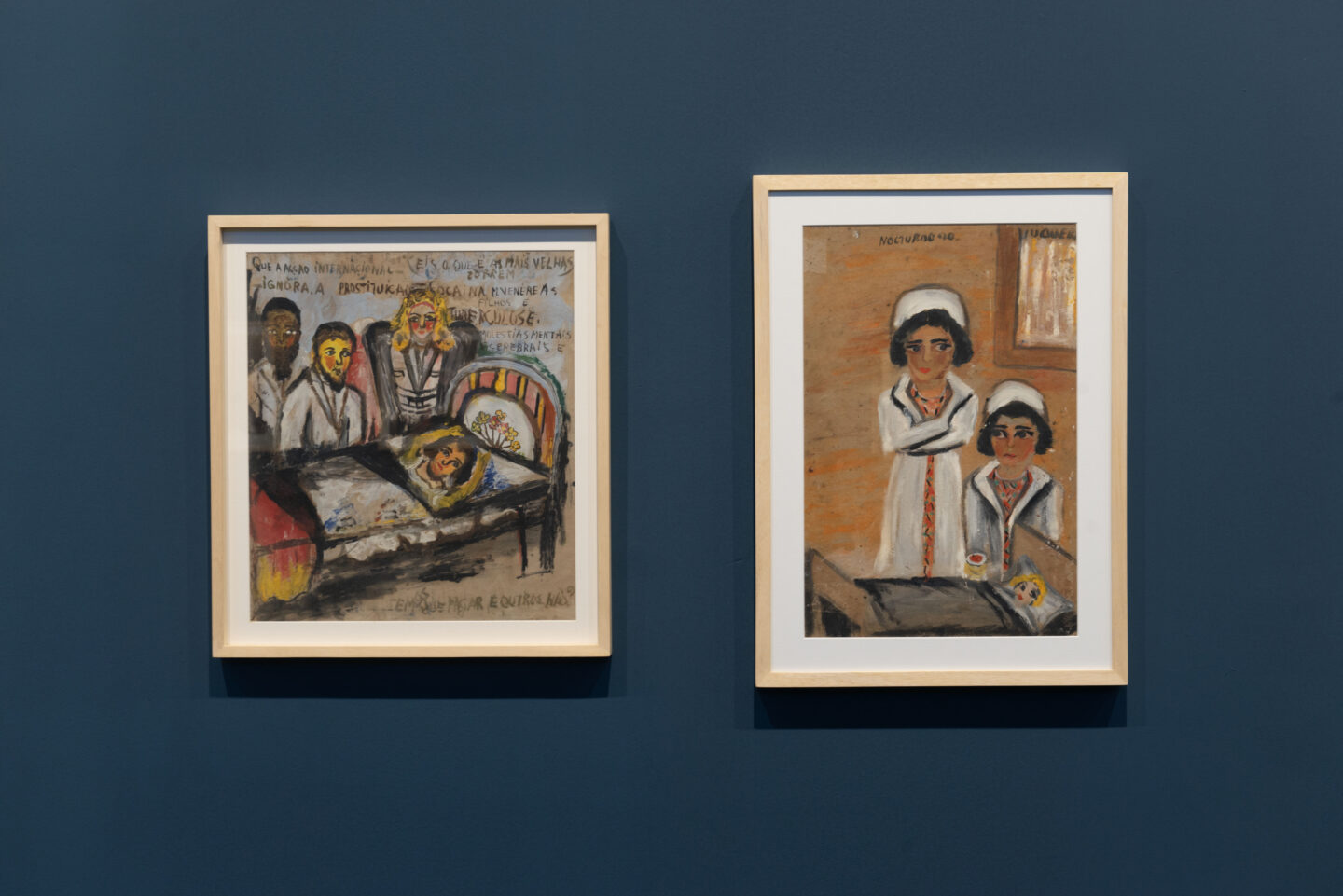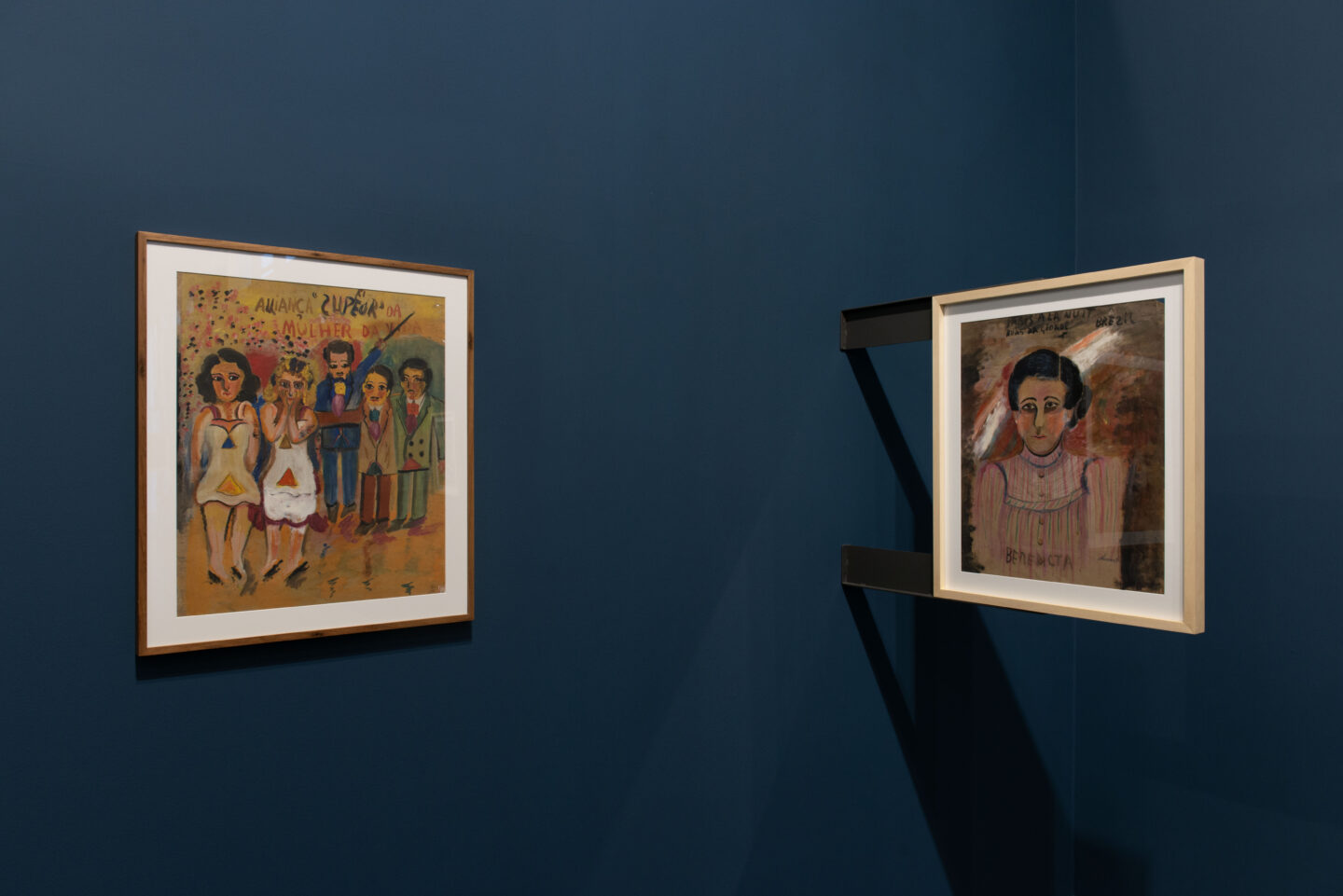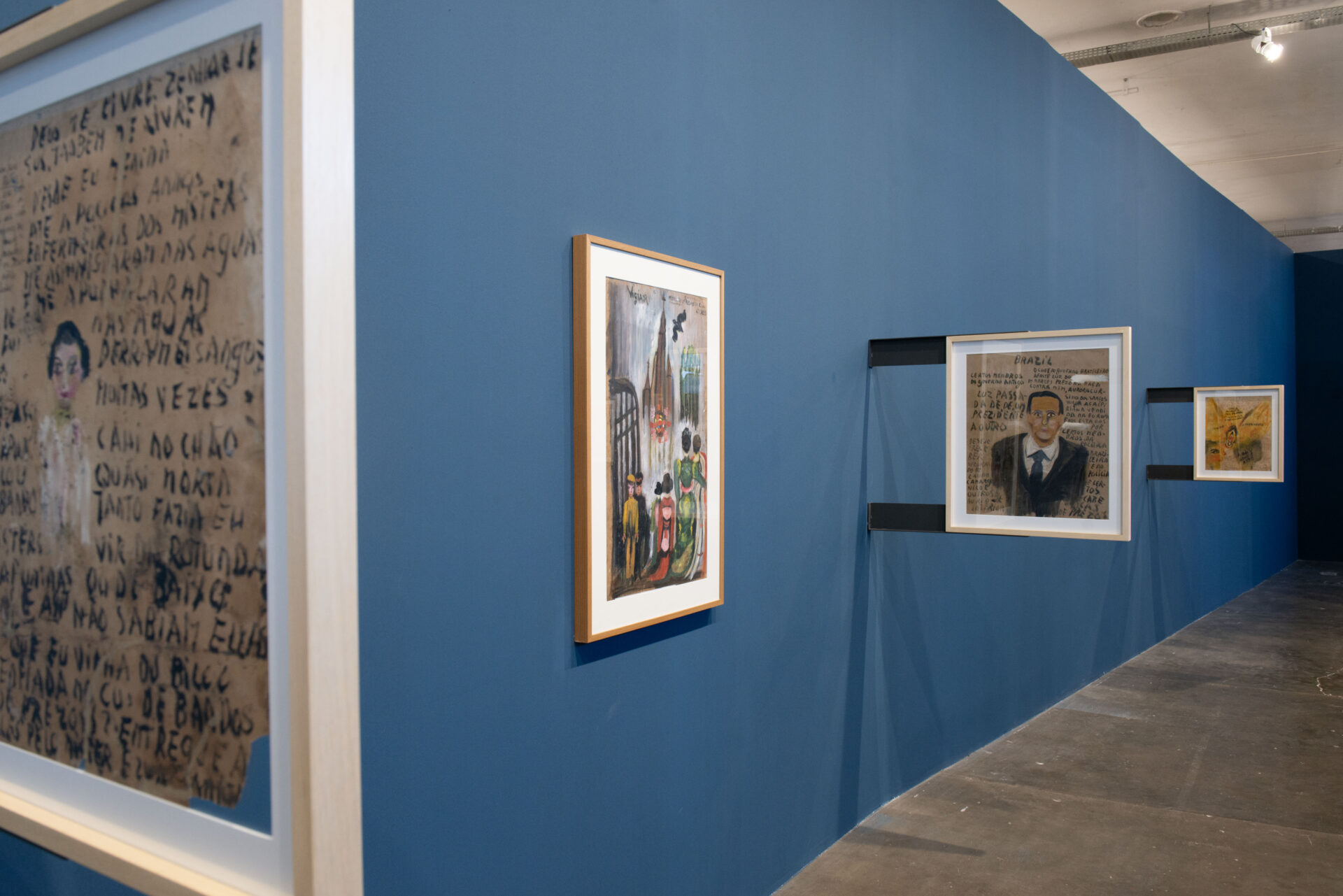
Aurora Cursino dos Santos
How many stabs make up this sorrow? and how many strokes does it take to undo it? tThere are too many eyes, in the paintings, almost as many as there are – more, or less readable – words. tThe eyes seem to gaze from there, from before, when they were painted, in order to see if the present has brought something new, less stabbing, less bloodshed, less of this sorrow.
It’s a sorrow with many names: sexism, misogyny, patriarchy, oppression, abuse, disrespect, dehumanization… some of the pairs of eyes translate some of these names, if you pay attention, if you have the courage to look back there, into them, into the paintings, into the time that tried in so many ways, so many times, to silence Aurora (1896–-1959).
Prophecies, reveries, exorcisms, predictions. a desire: to predict herself happy future. the art of escaping the destinies programmed for the end. for subjection. for violence. for sorrow.
Right before the turn of the century, Aurora is born. cCategorization through so-called biology was even stricter then than it is now: and Aurora was born a girl. a girl daughter of a mother, and daughter of a father.
And once this girl comes of age, father forces her to marry. but she suffers from drapetomania! she is given to flights, to drifts, to the destinies reinscribed by desire’s very designs.¹(1)
Aurora runs away, gets divorced, tries everything in this life: including the arts, in the old world, for she dreams, and dreams get hungry too. and such a hunger is probably what led her to, as they say, the world’s oldest profession, right? as old as that sorrow? older? professions, subjections: wife, whore, maid. flaws: mad.
But this old Aurora, as her paintings tell us, was kind of predicting the world anew, despite all that debris, all the ruins of these so archaic worlds, so hard to get past, constantly trying to bury her.
Maybe it is a reverie of mine, maybe it is just my desire, but it seems like, besides so many stabs, the so many eyes she painted seek a trace of this dream-world – where women, no matter the profession they have (or not), regardless of how hard the walls of the missus’ house or the asylum cells’ try to strangle, suffocate, silence… a world where any woman, no matter how indecent she may be considered, “amoral psychopath,”, is able to predict herself happy future.
& I dream along.
tatiana nascimento
translated from Portuguese by jess oliveira and bruna barros
1. The few and uncertain biographical data about Aurora Cursino dos Santos are in her paintings and drawings, almost always self-referential, somewhere between memory and delusion. They are also in medical and psychiatric documents which, as in every archive of violence, exceed in their partiality and demand a critical and distrustful reading.[e.n.]
- Vista de obras de Aurora Cursino dos Santos na 35ª Bienal de São Paulo – coreografias do impossível © Levi Fanan / Fundação Bienal de São Paulo
- Vista da obra Autorretrato, de Aurora Cursino dos Santos na 35ª Bienal de São Paulo – coreografias do impossível © Levi Fanan / Fundação Bienal de São Paulo
- Vista de obra de Aurora Cursino dos Santos na 35ª Bienal de São Paulo – coreografias do impossível © Levi Fanan / Fundação Bienal de São Paulo
- Detalhe de obra de Aurora Cursino dos Santos na 35ª Bienal de São Paulo – coreografias do impossível © Levi Fanan / Fundação Bienal de São Paulo
- Vista de obra de Aurora Cursino dos Santos na 35ª Bienal de São Paulo – coreografias do impossível © Levi Fanan / Fundação Bienal de São Paulo
- Detalhe da obra Cursino Rembrant, de Aurora Cursino dos Santos, na 35ª Bienal de São Paulo – coreografias do impossível © Levi Fanan / Fundação Bienal de São Paulo
- Vista da obra Hotel Avenida, de Aurora Cursino dos Santos, na 35ª Bienal de São Paulo – coreografias do impossível © Levi Fanan / Fundação Bienal de São Paulo
- Detalhe da obra Hotel Avenida, de Aurora Cursino dos Santos, na 35ª Bienal de São Paulo – coreografias do impossível © Levi Fanan / Fundação Bienal de São Paulo
- Vista de obra de Aurora Cursino dos Santos na 35ª Bienal de São Paulo – coreografias do impossível © Levi Fanan / Fundação Bienal de São Paulo
- Vista de obra de Aurora Cursino dos Santos na 35ª Bienal de São Paulo – coreografias do impossível © Levi Fanan / Fundação Bienal de São Paulo
- Detalhe de obra de Aurora Cursino dos Santos na 35ª Bienal de São Paulo – coreografias do impossível © Levi Fanan / Fundação Bienal de São Paulo
- Vista de Nocturno no Juqueri (dir.) e de obra sem título (esq.), de Aurora Cursino dos Santos, na 35ª Bienal de São Paulo – coreografias do impossível © Levi Fanan / Fundação Bienal de São Paulo
- Vista de obras de Aurora Cursino dos Santos na 35ª Bienal de São Paulo – coreografias do impossível © Levi Fanan / Fundação Bienal de São Paulo
- Vista de obras de Aurora Cursino dos Santos na 35ª Bienal de São Paulo – coreografias do impossível © Levi Fanan / Fundação Bienal de São Paulo
Aurora Cursino dos Santos (São José dos Campos, SP, Brazil, 1896 – Franco da Rocha, SP, Brazil, 1959) pained her works during her time at the Juquery Psychiatric Complex, in the context of the art therapy initiatives of the Escola Livre de Artes Plásticas directed by Osório Cesar. Her works, which sometimes deal with themes such as sex and violence, bear the memories and marks of a life-long struggle against patriarchy. Her works have been exhibited and featured in institutions and exhibits such as the 11th Berlin Biennale (Germany), MAM-SP, IMS São Paulo, MAC-USP, 16th Bienal de São Paulo and MASP (Brazil), and the International Exhibition of Psychopathological Art (Paris, France). Her works are part of the Museu de Arte Osório Cesar in Franco da Rocha.

 Português
Português
